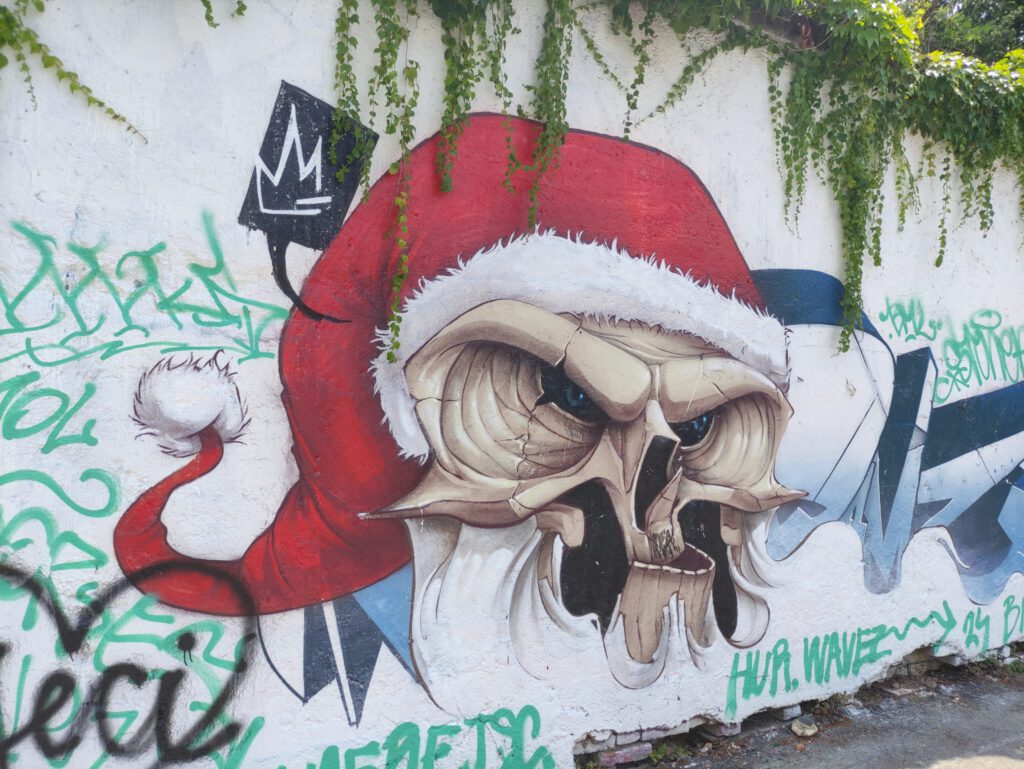The Allure of Skull Graffiti: Merging Dark Aesthetics with Urban Art
Skull graffiti is a striking subgenre of street art that merges the iconic imagery of skulls with the dynamic and expressive medium of graffiti. Featuring bold designs and often dark themes, skull graffiti captivates viewers with its edgy, visually powerful aesthetics. This article delves into the essence of skull graffiti, exploring its characteristics, techniques, and its influence on contemporary street art.
What is Skull Graffiti?
Skull graffiti is a form of street art that prominently features skull motifs. This genre is known for its dramatic, often macabre imagery, which is used to create visually arresting and thought-provoking artwork. The use of skulls in graffiti can convey a range of themes from rebellion and mortality to beauty and transformation, making it a versatile and impactful style.
Characteristics of Skull Graffiti
- Iconic Imagery: Skull graffiti centers around the depiction of skulls, which can be stylized in various ways—from realistic portrayals to abstract or cartoonish representations. The skull serves as a central motif, often symbolizing deeper themes or emotions.
- Bold Design: This style is characterized by its bold, striking designs. Artists use strong lines, high-contrast colors, and dramatic shading to make the skulls stand out and capture attention.
- Dark and Edgy Themes: Skull graffiti often explores darker themes, including death, decay, and the macabre. However, it can also be used to convey messages of transformation, defiance, or rebellion.
- Visual Impact: The use of skulls in graffiti creates a powerful visual impact. The stark and graphic nature of skull imagery can evoke strong reactions and provoke thought, making it a compelling choice for street art.
Techniques and Methods
1. Stencil Art
Stencil art is a popular technique for creating skull graffiti. Artists design detailed skull stencils that are applied to surfaces using spray paint. This method allows for precise and repeatable designs, making it easier to achieve intricate and consistent skull imagery.
2. Freehand Painting
Freehand painting involves creating skull graffiti directly on surfaces without the use of stencils. Artists use spray paint, brushes, and other tools to craft detailed and dynamic skull designs. This approach allows for greater creativity and spontaneity in the artwork.
3. Mixed Media
Skull graffiti often incorporates mixed media elements, such as stickers, posters, or even three-dimensional elements. These additions can enhance the texture and depth of the artwork, creating a more immersive and layered visual experience.
4. Digital Integration
Some artists integrate digital techniques into their skull graffiti, such as using digital projections or augmented reality to add interactive elements. This blending of digital and physical art expands the possibilities for skull graffiti and engages viewers in new ways.
Notable Examples and Artists
Several artists are renowned for their work in skull graffiti, contributing to its popularity and impact:
- Shepard Fairey: Known for his iconic “Obey” campaign, Fairey’s work includes powerful and graphic imagery, including skulls, that align with the visual impact of skull graffiti.
- David Lozeau: Lozeau’s art often features colorful and intricate skull designs, blending traditional Mexican Day of the Dead motifs with contemporary street art styles.
- Hush: An artist who combines elements of street art with fine art, Hush’s work includes stylized skulls and other bold imagery that reflect the dramatic nature of skull graffiti.
Impact on Art and Culture
Skull graffiti has made a significant impact on both the art world and popular culture:
- Artistic Expression: The use of skulls in graffiti allows artists to explore themes of mortality, rebellion, and transformation. This rich symbolism adds depth and complexity to street art.
- Urban Aesthetics: Skull graffiti enhances urban environments by introducing bold and provocative designs. This style contributes to the visual diversity and cultural richness of cityscapes.
- Cultural Resonance: The imagery of skulls resonates with various cultural and historical themes, from ancient symbolism to modern counterculture. This connection adds layers of meaning to the artwork and engages diverse audiences.
Challenges and Considerations
- Legal Issues: Graffiti, including skull graffiti, can face legal challenges related to vandalism and property rights. Artists must navigate these issues and seek permission when necessary.
- Maintenance: The durability of skull graffiti can be affected by environmental factors and vandalism. Ongoing maintenance is required to preserve the artwork’s visual impact and integrity.
Conclusion
Skull graffiti represents a powerful and visually compelling form of street art, characterized by its bold designs and dark themes. By incorporating skull imagery, artists create impactful artworks that capture attention and provoke thought. As this art form continues to evolve, it remains a testament to the creativity and expression found in contemporary street art.evolve, it remains a testament to the creativity and innovation of contemporary street artists.street art to bring joy and artistic expression to public spaces.enthusiasts.
